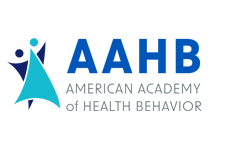Abstract
A recent public health concern is the nonmedical use of prescription drugs among U.S. adolescents. The purpose of this study was to determine the relationship between negative school experiences and lifetime and past year pain reliever misuse among adolescents enrolled in high school nationwide. A secondary analysis was performed using the National Survey on Drug Use and Health 2017 data. Participants included 8,337 adolescents enrolled in 9th -12th grades. A total of 6.0% of high school students reported they had misused pain relievers in their lifetime, and 3.9% reported they had misused pain relievers during the past year. High school students who reported the following negative school experiences were at increased odds of reporting lifetime pain reliever misuse: liked/hated going to school (adjusted OR [aOR] = 2.04, 95% confidence interval [CI] = 1.66-2.50); felt their coursework was somewhat/very boring (aOR = 1.81, 95%CI = 1.48-2.22), seldom/never meaningful (aOR = 2.01, 95%CI = 1.64-2.45), and/or would be somewhat/very unimportant to them later in life (aOR = 1.64, 95%CI = 1.33-2.01); and had teachers who seldom/never let them know they were doing a good job (aOR = 1.71, 95%CI = 1.40-2.09). High school students who had a “D” grade average or lower (aOR = 2.69, 95%CI = 1.89-3.82) and skipped school on at least one day (aOR = 2.18, 95%CI = 1.76-2.70) were more likely to report lifetime use. Similar significant findings were reported between negative school experiences and past year pain reliever misuse. Negative school experiences are risk factors for lifetime and past year pain reliever misuse among U.S. adolescents. Programming that reduces students’ negative school experiences may create a positive environment, and in turn, reduce misuse.
Creative Commons License

This work is licensed under a Creative Commons Attribution-Noncommercial 4.0 License
Recommended Citation
Wood, Kelsi J.; King, Keith A.; Vidourek, Rebecca A.; and Merianos, Ashley L.
(2019)
"Negative School Experiences and Pain Reliever Misuse among a National Adolescent Sample,"
Health Behavior Research:
Vol. 2:
No.
4.
https://doi.org/10.4148/2572-1836.1061




